from: http://radicalart.info/concept/tautology/index.html

Paradox

Nothing

Concept Art

Radical Art (homepage)
Tautologies
Tautological self-description
The tautology is the conceptual equivalent of the monochrome. It is the proposition which is necessarily true; stating its truth thus conveys no information. (In Kantian terms: a tautology expresses an analytic judgment.) Prototypical tautologies are the truths of logic and mathematics.
A circular statement may be tautological in that its very form guarantees its truth. ("Dit is Nederlands." "This sentence consists of six words.") Such self-referentially true statements are sometimes presented as visual artworks: painted verbal descriptions which state a self-evident property of the painting itself.
In conceptual art, this strategy is used so often that it is sometimes taken to be the defining characteristic of this artistic genre. Commenting on On Kawara's Date Paintings, Gudrun Inboden asserts: "Dass die einzelne Arbeit nichts mitteilt, was über den ablesbaren Tatbestand hinausginge, und nichts außer sich selbst verkörpert (hier ihre an einen bestimmten Tag geknüpfte Entstehung), ist das spezifische Merkmal von Konzeptkunst." [Cf. Staatsgalerie Stuttgart: On Kawara.]
Self-referential statements need not be tautological. They may be contingently true, contingently false, or paradoxical. The latter case arises when a statement implies its own falsehood; i.e., its circularity is vicious. (The prototype example is the liar paradox: "I am lying now." ) Paradoxical statements constitute a distinct subgenre of conceptual art; we anthologize it on a separate page.
|

Gerhard Rühm: Ein-wort-tafel, 1955
|
|
|
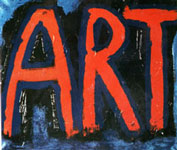
Ben Vautier: Art, 1958
|
Roy Lichtenstein: Art, 1962
|
Joseph Kosuth (From Nine Paintings
with Words as Art), 1966
|
|
|

Sol LeWitt: Red Square, White Letters, 1962
|
|
Joseph Kosuth: Wittgenstein's Color, 1989
|
|
|
On Kawara:
Nothing, Something, Everything, 1963.
|
|
|
Roy Lichtenstein: Masterpiece, 1962
|
Pieter Engels: Well painted, 1996.
| |
1965-S.jpg)
Yannis Kounellis:
Untitled ("Paint"), 1965
|
Joseph Kosuth:
Nine Paintings with Words as Art, 1966
|
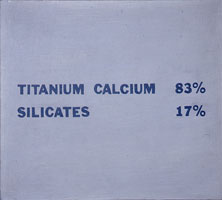
Mel Ramsden: 100 % Abstract, 1968
|
|
|
Joseph Kosuth:
Nine Paintings with Words as Art, 1966
| |
Derek Jarman:
Light Sculpture,
ca. 1970
|
Joseph Kosuth:
"Neon", 1965
|
Bruce Naumann:
"none sing / neon sign", 1970
|
Tracey Emin:
Red, White & Fucking Blue, 2004
|
Reynald Drouhin: Keyword, 2006
|
Ben Vautier, 1966
|
Mel Bochner: Measurement Room, 1969 (detail)
|
|
|
|

Arman: Accumulation, 1973 (detail)
|
|
Fred Eerdekens: The image as distance between name and object, 1991.
|

Lawrence Weiner:"A translation from one language to another / Een vertaling van de ene taal naar de andere", 1996.
|

Ceal Floyer:
Reserved/Reversed, 2005
|
Erik Dietman: "Pain", 1967
|
Mathieu Mercier:
"Caractères", 2001
|
Jenny Holzer:
"Scrivendi sui muri di notte", 2003
|
Stefan Brüggemann:
"Looks Conceptual", 1999
|
Annika Stroem:
"This work refers to Joseph Kosutt", 2004
| |
Trivial self-description
Bordering on the tautological, there are self-referential artworks which convey unremarkable (but contingent) information about themselves.
|
Billy Apple:
For Sale, 1960
|
Bjarne Melgaard:
Untitled, 2004
|
Arnaud Labelle-Rojoux:
"Profitez-en – l'art est encore en vente libre!", 2005
|
Matthieu Lorette:
"Let's make lots of money", 2005
|
Annika Ström:
"This piece is made to support me"
|
Robert Morris:
Box with the sound of its own making, 1961
|
John Baldessari:
A painting that is its own documentation, 1968
|
|
Lewis Carroll: "the country itself, as its own map".
“That’s another thing we’ve learned from your Nation,” said Mein Herr, “map-making. But we’ve carried it much further than you. What do you consider the largest map that would be really useful?”
“About six inches to the mile.”
“Only six inches!” exclaimed Mein Herr. “We very soon got to six yards to the mile. Then we tried a hundredyards to the mile. And then came the grandest idea of all! We actually made a map of the country, on the scale of a mile to the mile!”
”Have you used it much?” I enquired.
“It has never been spread out, yet,” said Mein Herr: “the farmers objected: they said it would cover the whole country, and shut out the sunlight! So we now use the country itself, as its own map, and I assure you it does nearly as well."
|
Self-denotation.
As the tautology is the redundant proposition, the self-representing image is the redundant sign. This kind of vacuous mimesis is displayed, for instance, by Marcel Duchamp's readymades, Aleksandr Rodchenko's monochromes, and Jasper Johns' flags. (Self-denotation constitutes by no means the only possible interpretation of these works one, but it is the most parsimonious one. Noting that the very emptiness of these works invites hallucinatory over-interpretation, one may decide to decline the invitation.)
Joseph Kosuth acknowledged the connection between pop and conceptual art: "And in Jasper Johns' work – such as his 'Target' and 'Flag' paintings and his ale cans – one has a particularly good example of art existing as analytical proposition." [ "Art after Philosophy, Part II." Studio International, November 1969, p. 161.]
Arthur Danto: "Some interesting attempts in contemporary art have been made, pre-eminently, I think, by Jasper Johns, to collapse the distance between vehicle and content, making the properties of the thing shown coincident with the properties of the vehicle, and hence destroying the semantical space between reality and art. Needless to say, I regard all such attempts as logically foredoomed." [In: "The Transfiguration of the Commonplace." The Journal of Aesthetics and Art Criticism, Vol. 33, No. 2 (Winter, 1974), pp. 139--148 (p. 148).]
|
Cornelis Gijsbrechts:
Canvas, 1670
|
Marcel Duchamp:
Porte-bouteilles, 1914
|
Aleksandr Rodchenko:
Pure Blue Color, 1921
|
René Magritte:
La Belle Captive, 1931
|
Jasper Johns:
Flag, 1954-55
|

Robert Indiana: Zero, 1964
|
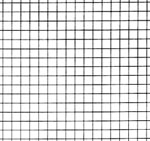 |
Terry Atkinson and Michael Baldwin:
Map of an area of dimension 12''x12'' indicating 2.304 1/4" squares (Map of itself), 1967 (detail).
This 'map' has no correspondence with anything else but itself in terms of the spatial indices. It is 'the country itself'.
Michael Baldwin, Charles Harrison, Mel Ramsden:
Art & Language in Practice. Vol. 1. Illustrated Handbook.
Catalogue Fundació Antoni Tàpies. Barcelona, 1999.
|
|
|
|
Tautology in Software Art
Patrick May: Lightswitch, 2000. A self-documenting web-page.
RiXtA (3SC): Self Disassembler, 2000. A program which prints out its own code.
(Assembly code for MSDOS. Download here.)
|

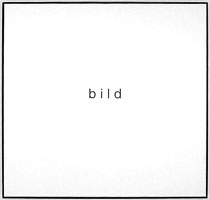
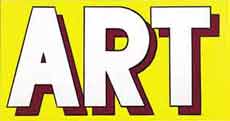


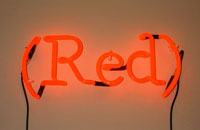
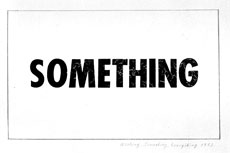

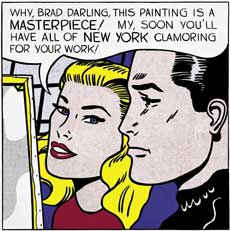
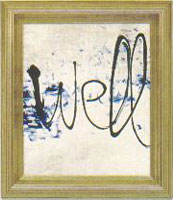
1965-S.jpg)

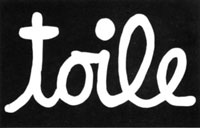




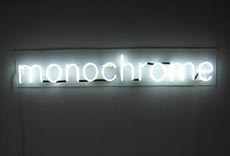
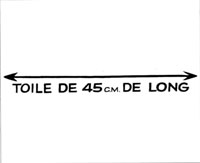

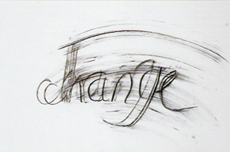
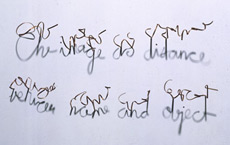




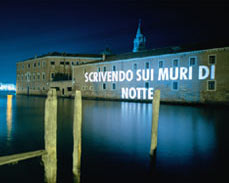

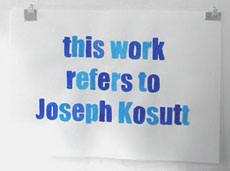
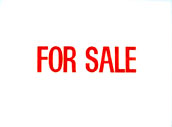
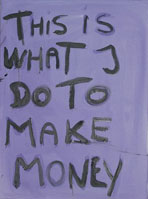
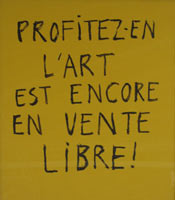
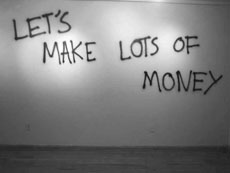

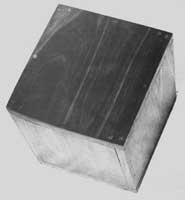
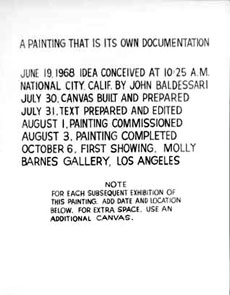

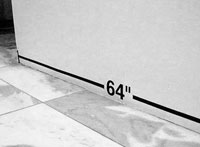

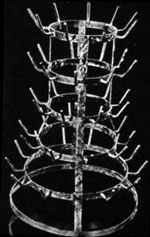





No comments:
Post a Comment